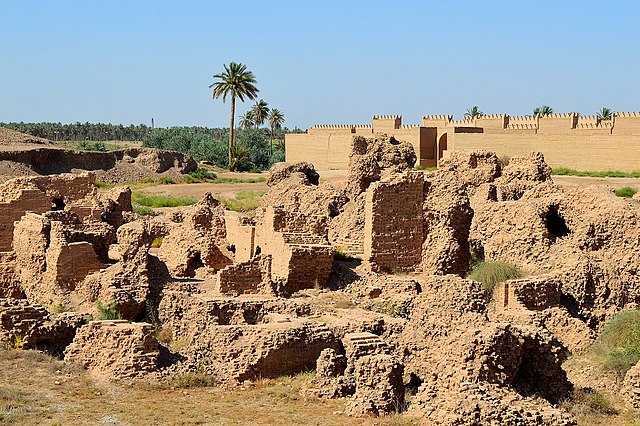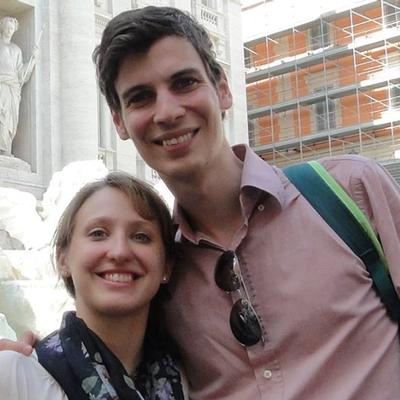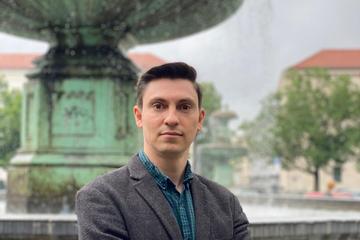
By Emil Anton
HELSINKI — The upcoming papal visit to Iraq, scheduled for March 5-8, is a dream come true – if it indeed happens and does not get cancelled at the last minute due to the pandemic. It is just about the most historic apostolic journey one could imagine. For the first time, the pope is going to Baghdad. Or, in biblical terms, Rome is going to Babylon.
For most of us, Babylon is perhaps a mythic ancient kingdom somewhere “out there.” Until not so long ago, this was the case for me, too, even though my grandmother’s second cousin, Emmanuel Delly, held the title “patriarch of Babylon.” Only fairly recently did I discover that the ruins of Babylon, or Babel, are still visible – and visitable – only about a 1.5-hour drive south of Baghdad.
These ruins, restored by Saddam Hussein, are of the capital of the Neo-Babylonian Empire, built by Nebuchadnezzar II, between the seventh and sixth centuries B.C. This king is best known for destroying the Temple of Jerusalem and taking the Jews to exile to the “rivers of Babylon.” In Nebuchadnezzar’s Palace Archives, archeologists have recently discovered mentions of the oil ratios given to the deported king of Judah and his sons.
But Babylon did not last forever. The Persian King Cyrus conquered it in 539 B.C. Alexander the Great died in Babylon in 323 B.C., failing in his dream to make it the capital of his Greek world empire. His successor, Seleucus, founded a new capital by the Tigris River called Seleucia, which later expanded to an important twin city called Seleucia-Ctesiphon, under another stage of Persian rule (the Parthians and Sassanids). This city became the successor to Babylon, the capital of the enormous Persian Empire, the archenemy of its western neighbour, Rome.
We know about the spread of Christianity in the Roman Empire and the persecutions of Christians there. Much less known is the spread of Christianity in Persia, which took place simultaneously, and the horrible persecutions that took place there under the Zoroastrian Sassanids. Hundreds of thousands of Christians were brutally tortured and murdered in the fourth and fifth centuries, for they were seen as allies of Rome, now Christian, and continuously at war with Persia.
But the “Church of the East,” as the Aramaic-speaking Church of Persia was called, survived. In fact, in the Middle Ages it expanded to the Far East and became geographically the most extended church in the world: from Cairo to China. Under the Abbasid caliphate (eighth to 13th centuries), the patriarchs of the Church of the East moved from Seleucia-Ctesiphon to Baghdad, the new capital of the Islamic Empire. There, in addition to co-ordinating the Asian mission, they engaged in interreligious dialogue with the successors of the prophet Muhammad.
This fascinating history has largely been forgotten. It is still unknown in the West. The first reason is the language barrier. We only had access to good histories of the Church of the East in English in the 2000s. Original sources are in Syriac, Arabic, even Chinese. Another reason is that the Church of Persia did not attend the Council of Ephesus and later received the dubious polemical label “Nestorian.” A final reason is that the Church of the East was reduced to a small number of faithful after centuries of Islamic rule and the destructive campaigns of Timur Lenk (around 1400 A.D.), not to mention the mass murder of Syriac Christians in the First World War.
From the 13th century on, there were attempts to establish a union between the Church of Rome and the Church of the East. From an important but ultimately failed 16th-century union emerged what is today known as the Assyrian Church of the East, as well as its smaller split-off branch, the Ancient Church of the East. A lasting union between the historical patriarchate of the East and the Church of Rome was achieved in 1830, when Yohannan Hormizd was appointed “patriarch of Babylon of the Chaldeans.” His successor today is Cardinal Louis Sako, who will host Pope Francis in Iraq in just over a month from now.
I am personally very excited about the papal visit. Of course, my first hope and expectation are that it will bring joy, consolation and encouragement to the Christians of Iraq, who have suffered so much in the recent past. The pope’s apostolic journey is also sure to give a boost to all of Iraqi society, struggling to regather itself in these challenging times.
As for the West, I hope the papal visit will arouse interest in the inexhaustible history of Iraq and its Christians. We can help our Mesopotamian brothers and sisters in many ways. Financially and with prayers, for sure. But we can also help them by learning about them, by speaking about them, and, most importantly, by learning from them.
Photo: Ruins of the ancient city of Babylon, Mesopotamia, Iraq, 6th century BC, reign of Nebuchadnezzar II. Wikimedia Commons, Osama Shukir Muhammed Amin FRCP (Glasg). CC BY-SA 4.0.
Emil Anton is a scholar in Finland and a Lay Centre alumnus (2016). He is of Finnish-Iraqi heritage. He holds a doctorate in theology and is the author of a book on Mesopotamian & Iraqi Christian history. During his stay in Rome, Anton carried out research for his doctoral disseration at the Pontifical Gregorian University as recipient of the Karl Schlecht Stipend. Both the Faculty of Theology of the University of Helsinki and the Gregorian belong to the Global Network of Research Center for Theology, Religious and Christian studies. Anton is the Finnish correspondent for Vatican News and president of the Academicum Catholicum (a Finnish association founded in 1936.) Photo below courtesy Emil Anton, shows Emil and his wife Beata in Rome in 2016.



